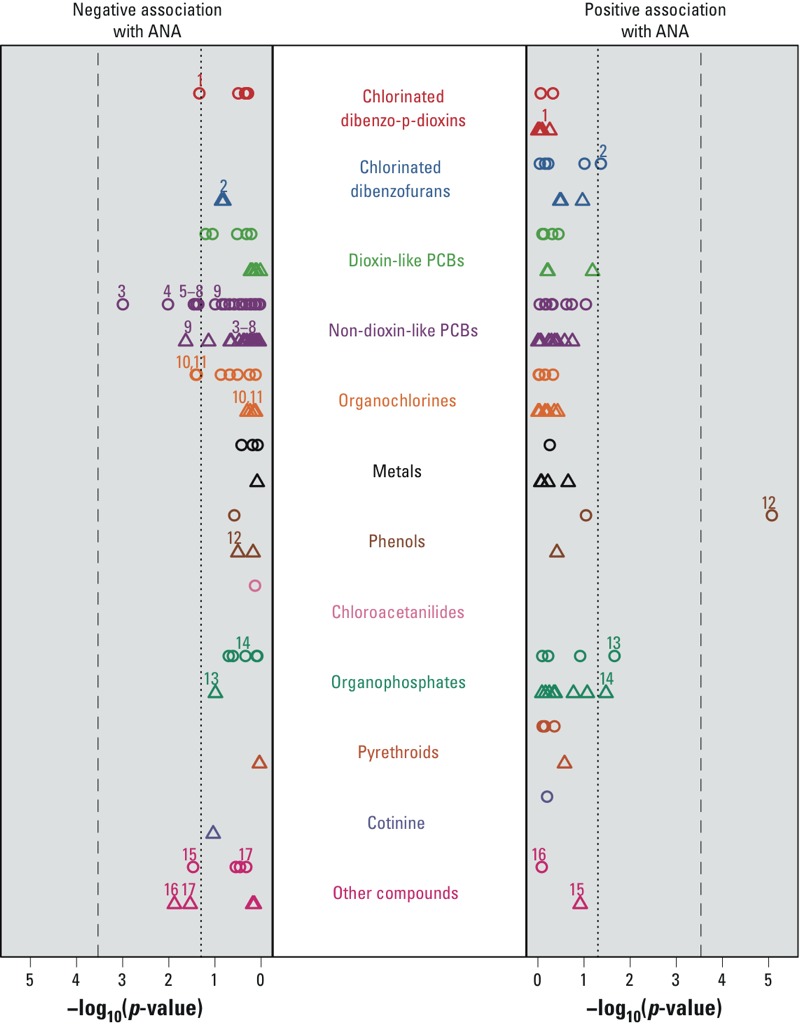Figure 2.

Statistical significance of associations between ANA and selected xenobiotics by sex, National Health and Nutrition Examination Survey, 1999–2004. For each chemical, the statistical significance of the ANA regression coefficient was calculated separately for males and females, under a lognormal concentration model adjusted for age, race/ethnicity, time period, BMI, and PIR. Chemicals are arranged within color-coded categories along the vertical axis, and negative log p-values are shown along the horizontal axes. Results are depicted by circles for males and triangles for females, where results for females were calculated from inverse-variance weighted averages of the parity-specific estimates. Symbols displayed on the right (left) indicate positive (negative) associations between ANA and the chemical. The dotted line corresponds to a p-value of 0.05 and the dashed line to the Bonferroni significance level, which is 0.05 divided by 171, the number of tests performed (86 for males and 85 for females). Chemicals significant at the uncorrected 0.05 level in at least one sex are labeled for both sexes. The chemical labels are: 1 = 1,2,3,4,6,7,8-heptachlorodibenzo-p-dioxin (HpCDD); 2 = 1,2,3,4,6,7,8,9-octachlorodibenzofuran (OCDF); 3 = 2,2',4,5,5'-pentachlorobiphenyl (PCB101); 4 = 2,2',3,5'-tetrachlorobiphenyl (PCB44); 5 = 2,3,3',4',6-pentachlorobiphenyl (PCB110); 6 = 2,2',5,5'-tetrachlorobiphenyl (PCB52); 7 = 2,3',4,4'-tetrachlorobiphenyl (PCB66); 8 = 2,4,4',5-tetrachlorobiphenyl (PCB74); 9 = 2,2’,3,5,5’,6-hexachlorobiphenyl (PCB151); 10 = 1-chloro-4-[2,2-dichloro-1-(4-chlorophenyl)ethenyl]benzene (p,p´-DDE); 11 = oxychlordane; 12 = triclosan; 13 = oxypyrimidine; 14 = dimethylthiophosphate; 15 = 2,4-dichlorophenoxyacetic acid; 16 = 2,4-dichlorophenol; 17 = 2,5-dichlorophenol.
